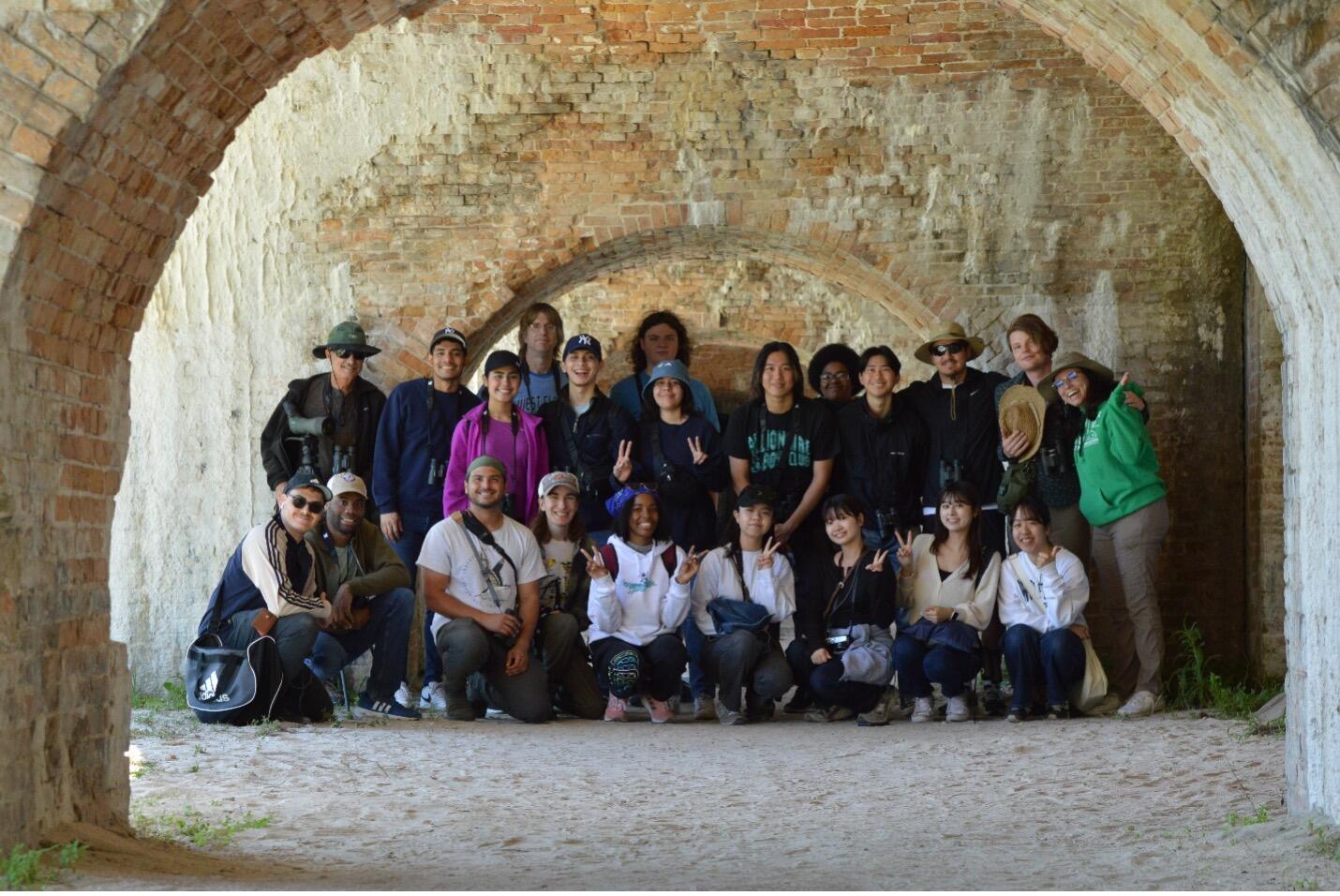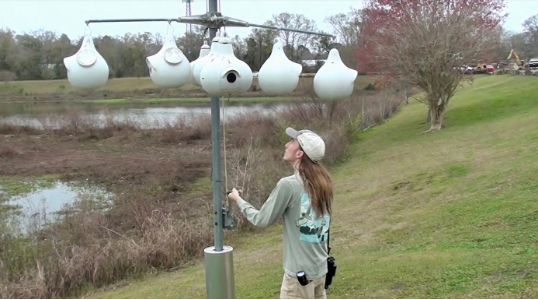Each year, college students from across Florida participate in Audubon Florida’s Conservation Leadership Initiative (CLI), a mentorship program that provides opportunities for students to immerse themselves in Florida’s conservation network and gain hands-on experience in the conservation field. As part of the program, students are paired with an Audubon chapter mentor who works with them to lead a conservation project.
Projects completed by the 2023-24 CLI cohort reflect the scope of the work of the conservation field itself, from community building to species monitoring to habitat conservation. We asked some of the students to reflect on their experiences.

Amanda “Orchid” Post, University of West Florida
As a Brazilian-American, I deeply empathize with the challenges and distances that migratory birds face, seeing their herculean feats as a reflection of my family’s immigration experience. Drawing inspiration from this parallel, I designed a CLI project with members from the Francis M. Weston Audubon Chapter that brought together migratory birds and international students attending the University of West Florida (UWF). Set during the first week of April, the project consisted of three parts.
1) Tabling on behalf of Audubon at the Global Block Party, an annual celebration of our student body’s cultural diversity.
2) A presentation about migration to UWF’s English as a Second Language cohort.
3) A birding field trip to Fort Pickens within Gulf Islands National Seashore.
Each event had an amazing turnout, and UWF’s International Department would like to pursue future collaboration with our local Audubon chapter.
My CLI project was in part inspired by the strategic alliances being forged through Audubon Americas, a hemispheric collaboration to protect our migratory birds. I believe investing in international students is a powerful way to build the global solidarity needed to protect and preserve our migratory species.
Brooklyn Boley, University of South Florida
For my CLI project, I was determined to focus on increasing accessibility in the birding space, driven by my passion for ensuring everyone can enjoy the outdoors. My incredible mentor, Audubon Rooftop Biologist Kara Cook, directed me to Birdability, an organization I had so much fun contributing to!
Birdability is an online site with a global, crowd-sourced map that displays different trails, car birding spots, and bird blinds, where information like trail surfaces, bathroom specifications, and potential safety concerns can be found. This information is uploaded by others who go out and visit the trails or blinds and fill out an initially long and intimidating-looking checklist (it is truly not that bad, I promise!), encompassing a wide variety of potential accessibility concerns. When uploading the checklist online, you also have options to add comments for clarity and add up to eight photos to better showcase any obstacles, signage, or conditions.
I added five new trails on the map, all in the Tampa Bay and St. Pete region. This means there are now five more options for folks to observe online to confirm that specific park will be a possibility to traverse before making their way out to the location. As Birdability states, birding should be for everybody and every body, and I am ecstatic that I was able to be a part of and share this wonderful resource.
You can learn more about Birdibilty or contribute to the map with your local outdoor spaces, by visiting www.birdability.org.

Richard Escarcena and Delaney Cassidy, University of Florida
Written by Richard Escarcena
For our CLI project, Delaney and I decided to collaborate out of a shared passion for research and to better pool our resources for a more ambitious project. Through our mentorship with Alachua Audubon Society, we were given the opportunity to intern at the Prairie Creek Conservation Lab where we were taught how to use mist nets and band birds. It was there that we decided on a project idea—using wildlife cameras at feeders to capture the species diversity and richness of both the Native Plant Garden at Prairie Creek and the University of Florida GREBE Garden on campus. The project is still ongoing, and we have high hopes and are very grateful for all the opportunities granted to us for being a part of CLI.

Lucas Pittman, Florida State University
The Purple Martin is a bird with a unique adaptation east of the Rocky Mountains: They nest almost exclusively in human-supplied housing. My local Audubon chapter, Apalachee Audubon Society, maintains two Purple Martin nest towers close to the Florida State University campus. For my CLI project, I developed a protocol for surveying the 24 artificial nests owned by Apalachee Audubon. Alongside my mentor, Kathleen Carr, and a local volunteer, Ashley, we checked nests once every week, recording nest-building progress, eggs laid, nestlings, and successful fledges. I plan to submit my data to the Purple Martin Conservation Association, an organization that collects community science data to track the reproductive biology of Purple Martins. The data collected by my project will be used to study how habitat variations, climate change, and the introduction of non-native species may affect the current conditions of Purple Martin populations. I would like to thank Audubon Florida for the opportunity to participate in CLI and work with such amazing birds.




